This post may contain paid links. If you make a purchase through links on our site, we may earn a commission.
I’ll show you how to make my Homemade Balsamic Glaze using only two ingredients and simple steps! This easy homemade balsamic glaze recipe is perfect for topping salads or for using as a glaze for chicken, fish, and more. If you love Trader Joe’s balsamic glaze, you’ll adore this recipe!
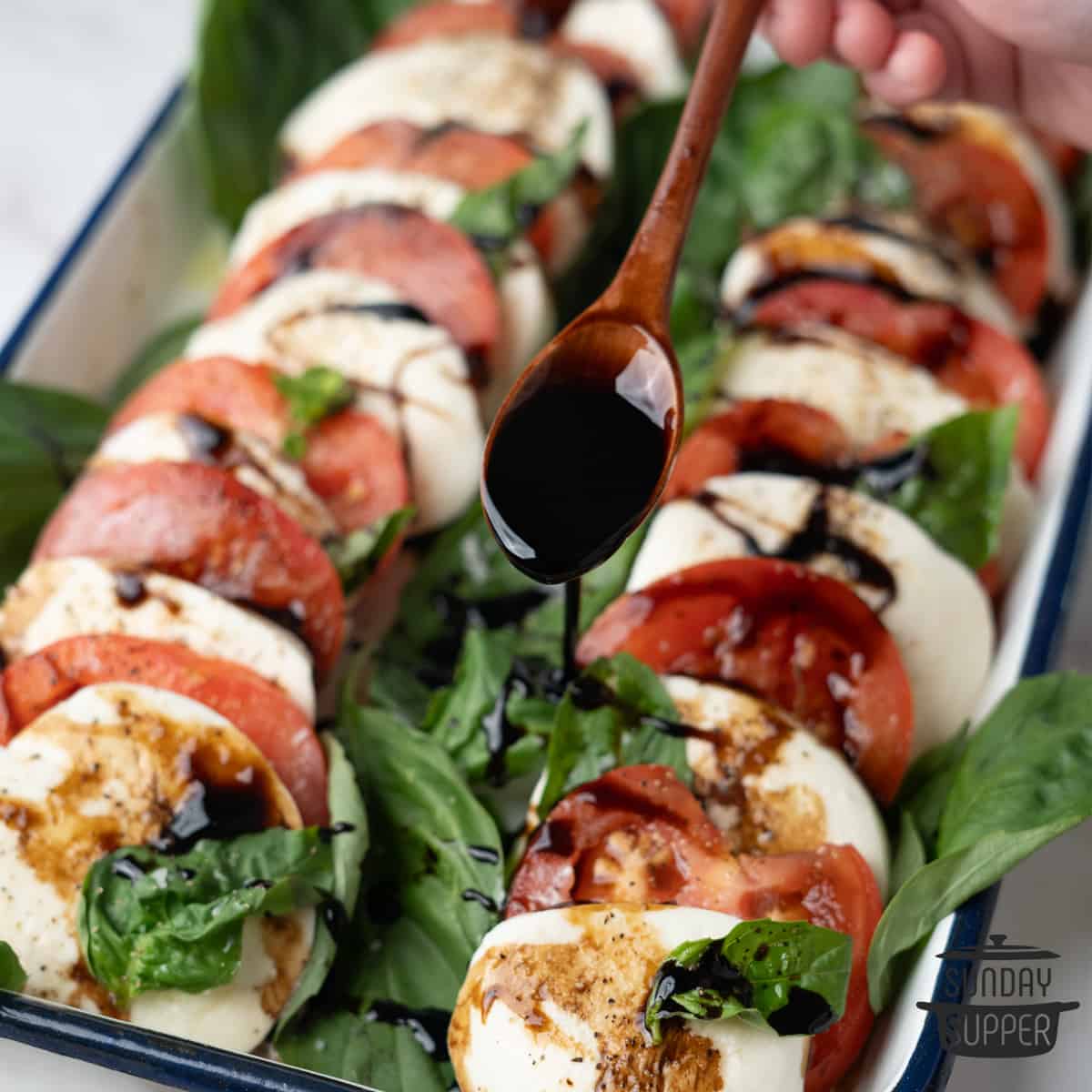
Jump to:
When I think about balsamic glaze, my thoughts drift to caprese salad. Plump tomatoes, smooth mozzarella, and tangy, sweet balsamic glaze… what could be better? But there’s much more you can do with a good balsamic glaze recipe! Imagine a beautiful plate of balsamic glazed chicken, or perfectly golden-brown balsamic brussels sprouts. So, so good!
In fact, the first dish I tried with balsamic glaze wasn’t a caprese at all, but a balsamic roasted chicken. I was so in love with it that I decided to experiment with using balsamic glaze for other recipes – and it’s what got my kids to eat brussels sprouts for the first time! That’s how you know you’ve made something special.
After plenty of tinkering with herbs and flavorings, I’ve found the best balsamic glaze recipe is kept simple. No extra bells and whistles here! Let’s get into how to make balsamic glaze!
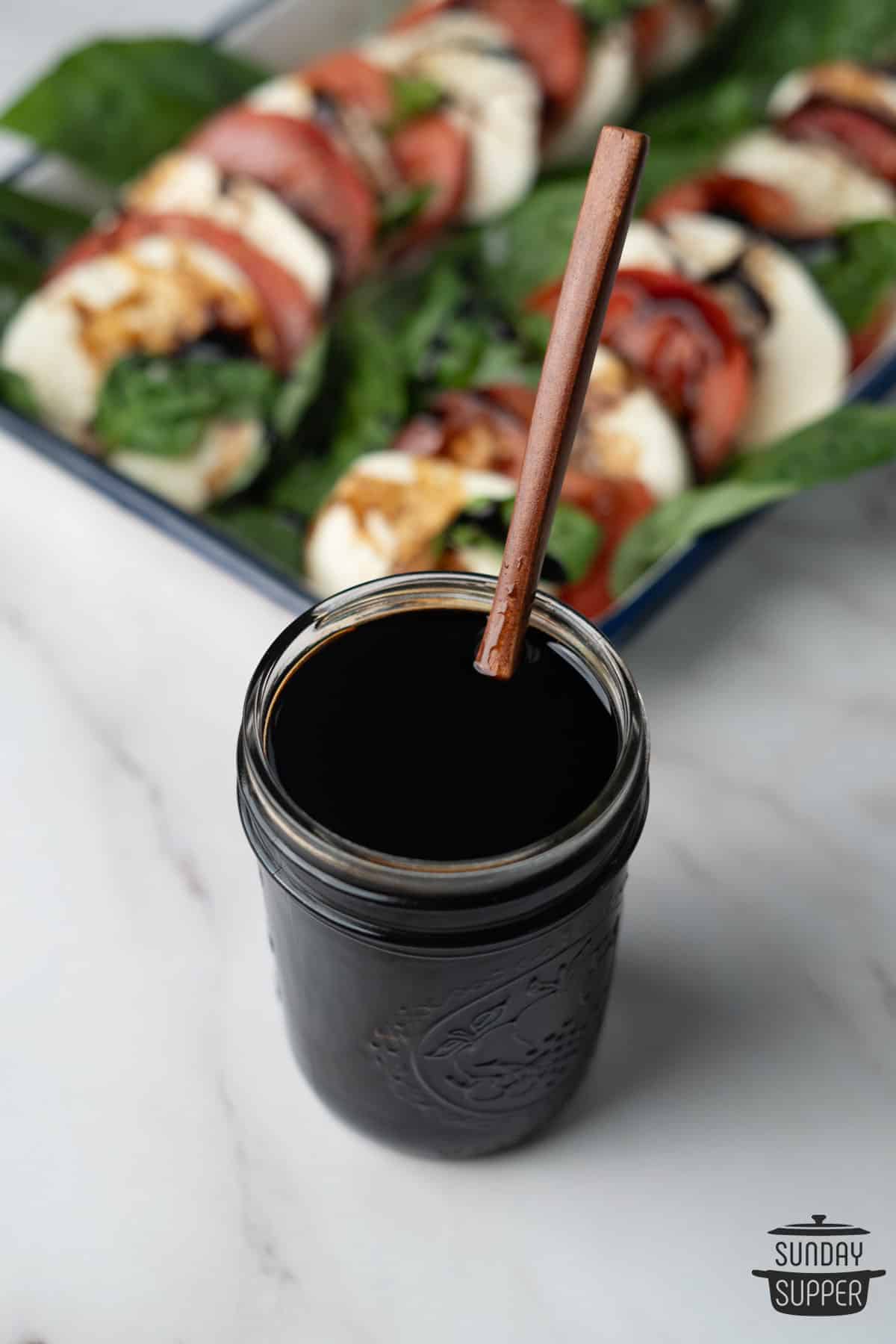
Why You’ll Love this Recipe
- Simple & Easy
- Super flavorful!
- Adjustable sweetness
- Great for salads and grilling!
Balsamic Vinegar Glaze Ingredients
- Balsamic Vinegar: The vinegar is the heart and soul of this recipe, so use a nice bottle of it, if you can. Because this is a reduction, the flavor will only get stronger.
- Brown Sugar (can be substituted): Brown sugar is my favorite sweetener for glazes, as it has a rich flavor perfect for reductions. You can substitute ¼ cup honey if you don’t have brown sugar.
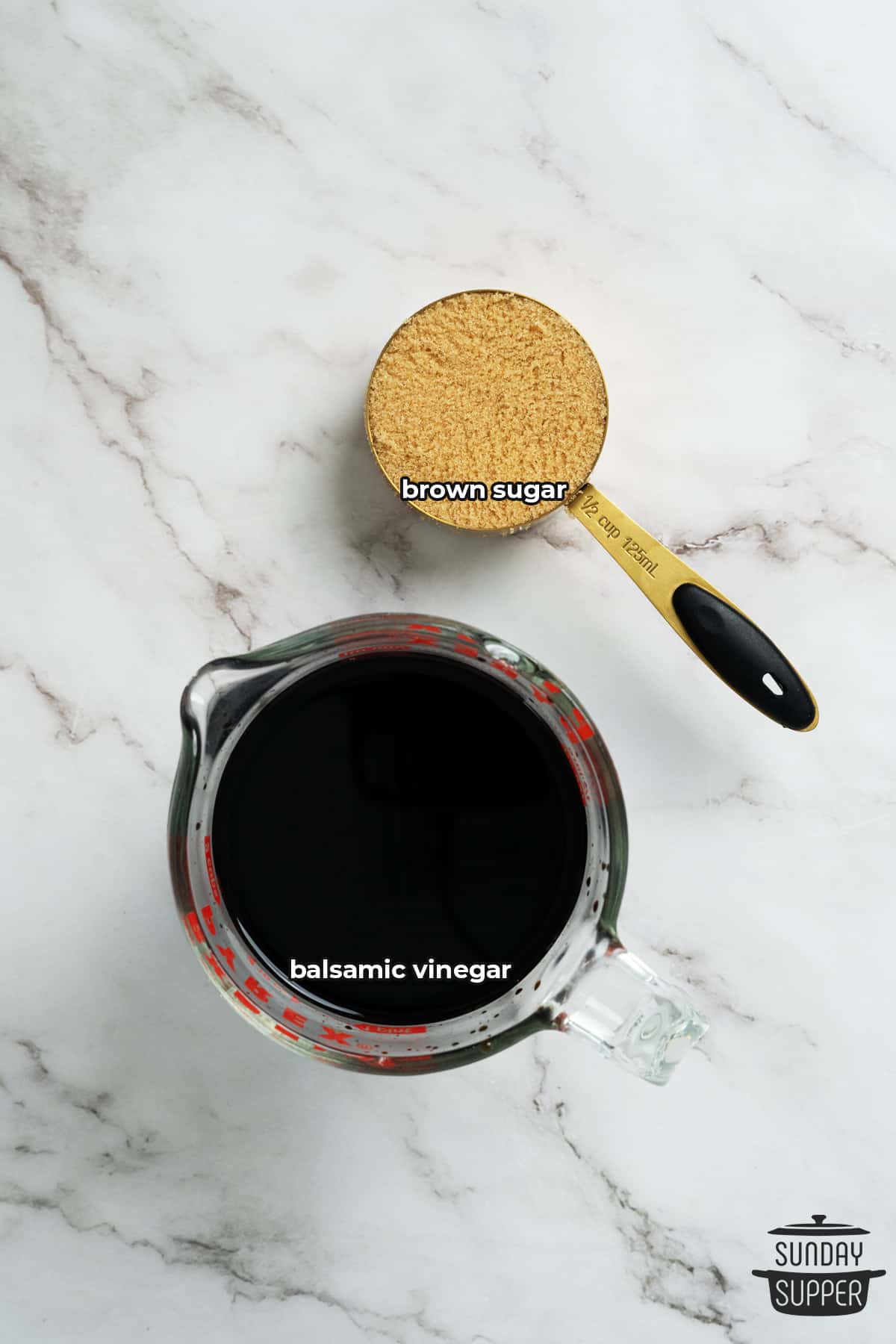
How to Make Balsamic Glaze

1: Add Ingredients
In a small saucepan over medium heat, add the vinegar and brown sugar, stirring until dissolved.
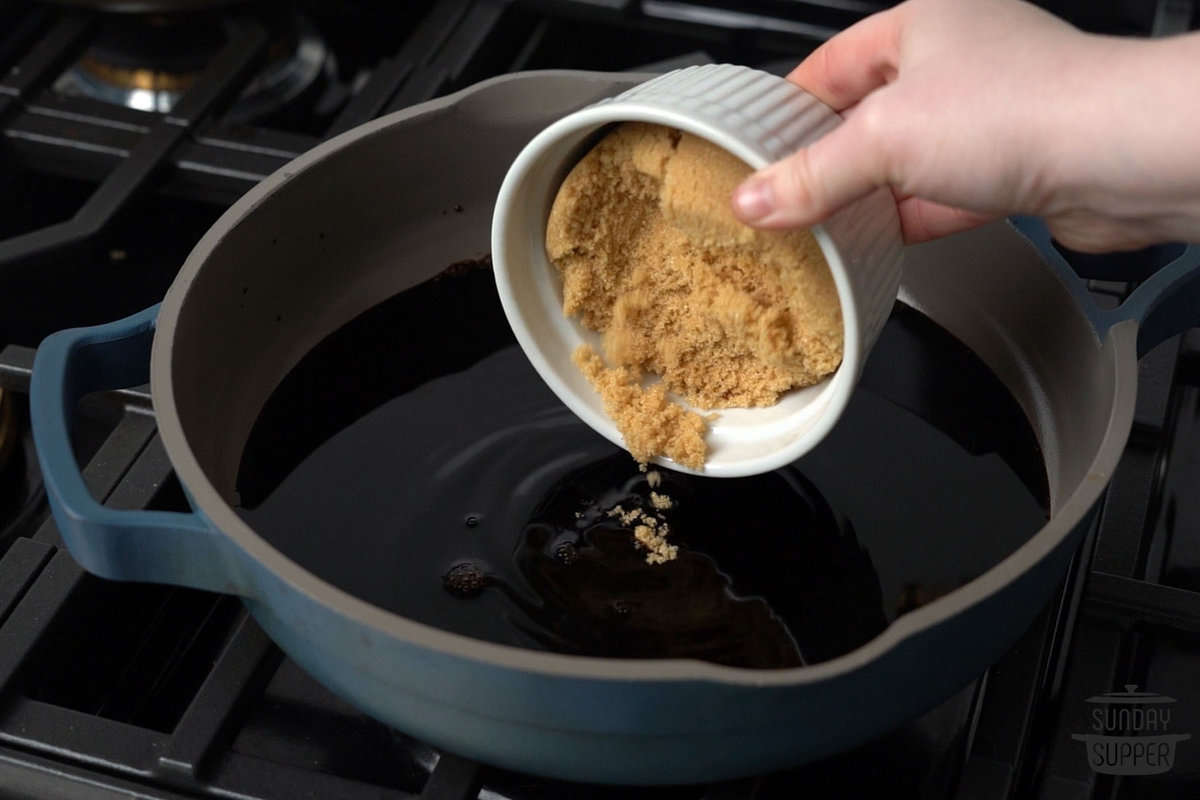
2: Simmer and Reduce
Bring the mixture to a light boil, then reduce heat to medium-low. Let simmer, stirring frequently, until reduced to about ½ cup, about 8-10 minutes.
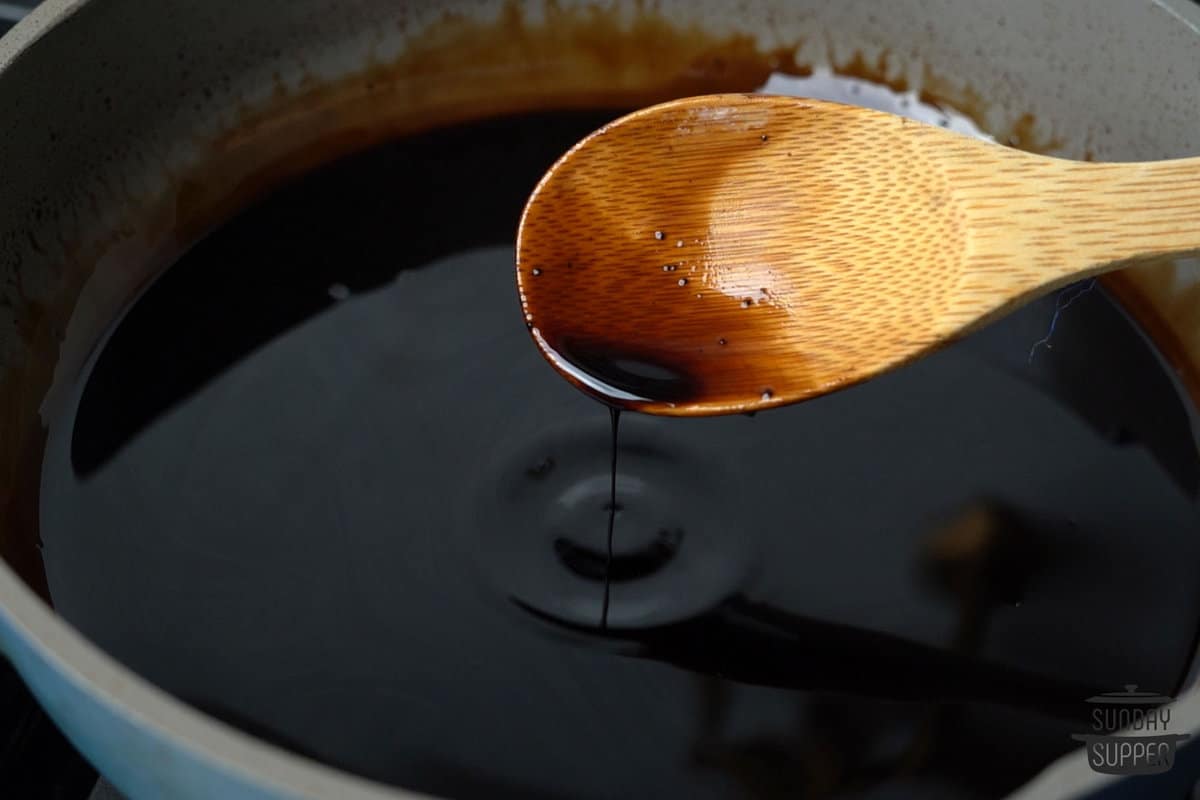
3: Let it Cool
Remove from the heat and let rest until the glaze comes to room temperature, about 10-15 minutes.
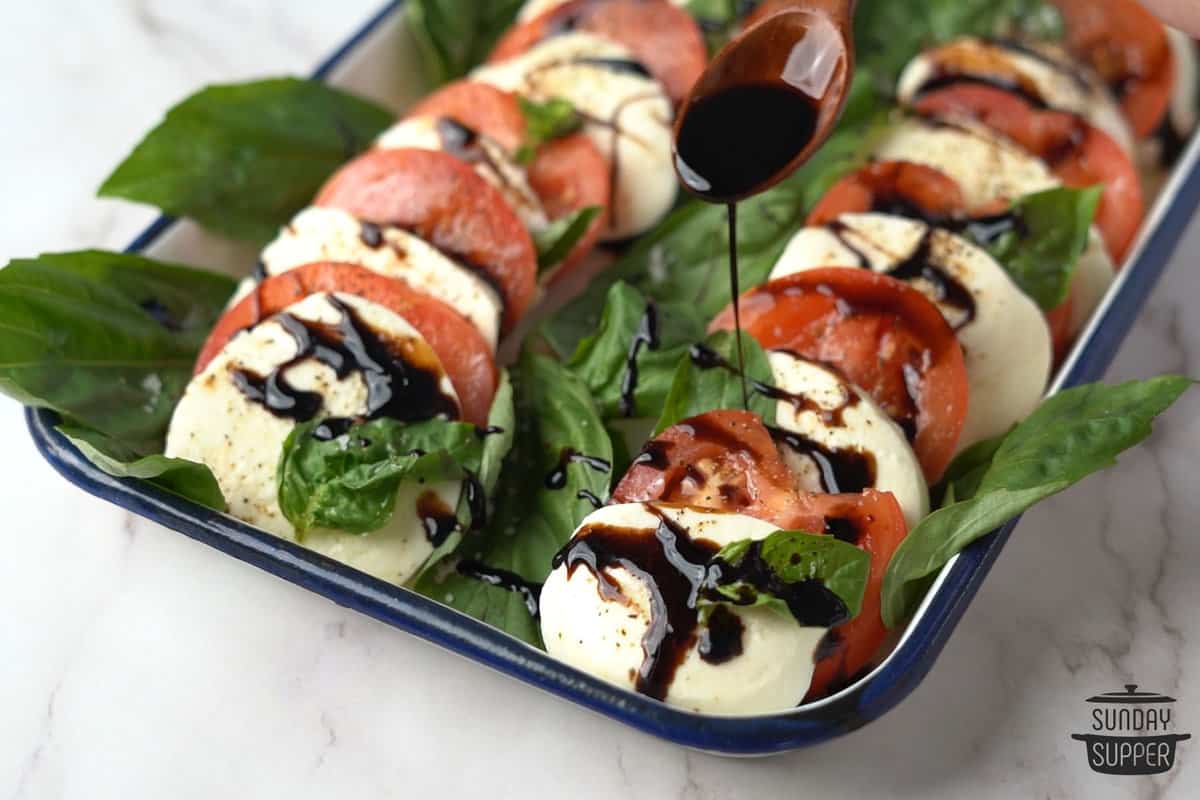
4: Store or Serve!
Transfer the cooled glaze to a jar or serve immediately, and enjoy!
Isabel’s Tips
- Add extra seasonings of your choice like garlic, herbs, and red pepper flakes.
- You’ll know when the sauce has reduced enough when it can coat the back of a spoon without immediately running off.
- This is balsamic glaze, not a balsamic reduction. To make a reduction, skip the sugar and instead add in extra seasonings of choice, such as rosemary, garlic, and red pepper.
- If substituting honey, let it simmer a little longer. The added liquid in honey balsamic glaze can take longer to reduce.
Storing Balsamic Glaze
Balsamic glaze is mostly vinegar, which means it pretty much doesn’t spoil if refrigerated properly! This makes it perfect for pouring into a glass jar with a tight lid and storing in the fridge for as long as you want. It can last up to three years, but I promise, you’ll be using it all up long before that time comes!
Homemade Balsamic Glaze FAQ
Not quite! While both are reduced balsamic vinegar, a balsamic glaze will feature a sweetener such as brown sugar or honey, which helps thicken the sauce and balance out the intense bitter flavor. Balsamic reduction doesn’t use sugar, and instead features aromatic seasonings like garlic and herbs.
Balsamic vinegar is a vinegar, slightly thicker than other vinegars, used to make balsamic glaze, which is further sweetened and thickened into a more glaze-like consistency than the plain vinegar.
You can absolutely use other sweeteners! I like brown sugar the most, but I’ve replaced it with honey and the results were just as delicious. You can also use white sugar or even maple syrup, but be warned that maple syrup will have a distinctly different flavor.
What to Serve with Balsamic Glaze
- Fruit: A drizzle of balsamic glaze makes nearly any fresh fruit taste better! I especially enjoy balsamic glaze on strawberries, grilled peaches, mango, pineapple, and watermelon.
- Vegetables: Roasted vegetables are delicious on their own, and only get better with glaze. Drizzle it over veggies before popping them in the oven to caramelize the glaze as they cook for a sticky treat you won’t be able to get enough of! I love it with air fryer broccoli.
- Salad: Whether it’s a summer-favorite caprese salad with fresh tomatoes or a quick “what’s in the fridge” lunch salad, you can’t go wrong by mixing a little balsamic glaze into the dressing. You can even use it for my grilled chicken salad.
- Protein: No more laboring over tons of seasonings! A bit of balsamic glaze is all you need to add tons of flavor to grilled proteins like chicken, pork, or salmon. Seriously, if you haven’t tried balsamic glazed salmon, now’s the time!
- Bread and Pasta: It’s hard to improve the perfection of pizza, but balsamic glaze manages to do it! It’s also perfect as a dip or drizzle over bruschetta and garlic bread.
- Desserts: The magic of balsamic is how it amplifies sweet flavors. I know it sounds a little wild, but seriously, try it drizzled over cookies or vanilla ice cream and get introduced to a whole new world of flavor combinations! Or, pour a little over your favorite honey goat cheese and serve it on sweet crackers for a delicate dessert sure to please a crowd.
What can’t you serve with balsamic glaze? It’s so delicious, it’s really good on everything! The sweet and savory flavor compliments most sweet, creamy, or savory flavors well, so there’s almost nothing it doesn’t pair with.
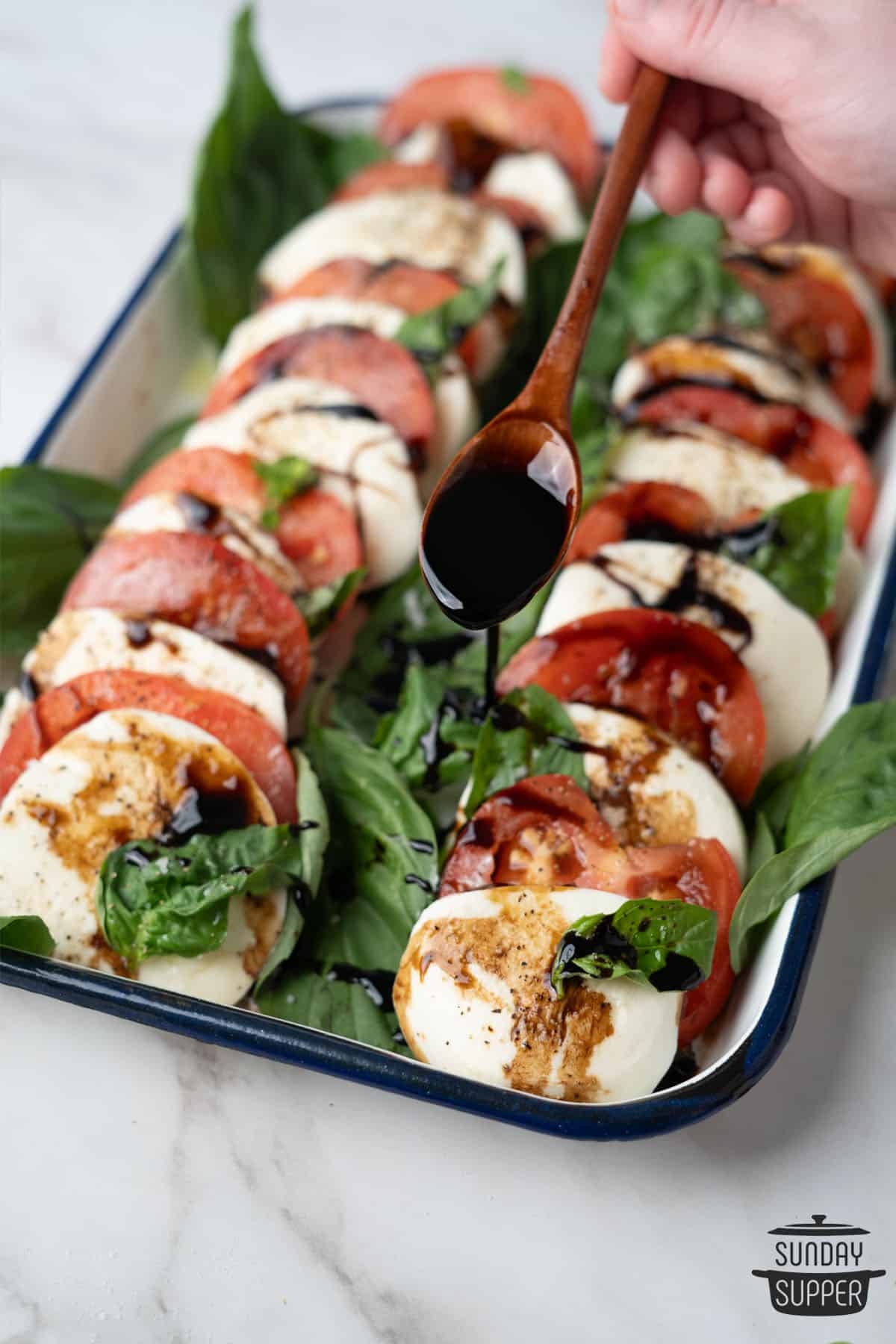
Homemade Condiments
Pin it for later!
Did you enjoy this page? Save it on Pinterest for later!If you enjoyed the recipe, leave a comment and a rating below!
Recipe
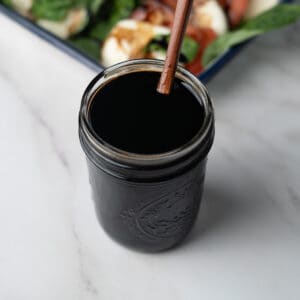
Homemade Balsamic Glaze with 2 Ingredients
Equipment
- Glass jar for storage
Ingredients
- 2 cups Balsamic vinegar
- ½ cup Brown sugar
Instructions
- In a small saucepan over medium heat, add the vinegar and sugar and stir until dissolved.2 cups Balsamic vinegar, ½ cup Brown sugar
- Bring to a light boil, then reduce heat to medium-low. Stirring regularly, let simmer until the vinegar reduces by half or more, about 10 minutes. It should be thick enough to coat the back of a spoon.
- Remove from the heat and allow to cool completely, about 15 minutes. Then store or serve, and enjoy!
Notes
- Add extra seasonings of your choice like garlic, herbs, and red pepper flakes.
- You’ll know when the sauce has reduced enough when it can coat the back of a spoon without immediately running off.
- This is balsamic glaze, not a balsamic reduction. To make a reduction, skip the sugar and instead add in extra seasonings of choice, such as rosemary, garlic, and red pepper.
- If substituting honey, let it simmer a little longer. The added liquid in honey balsamic glaze can take longer to reduce.


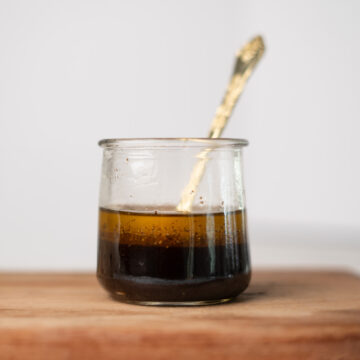
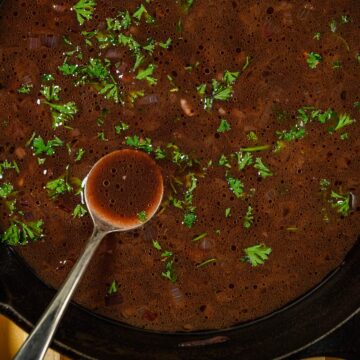
Comments
No Comments